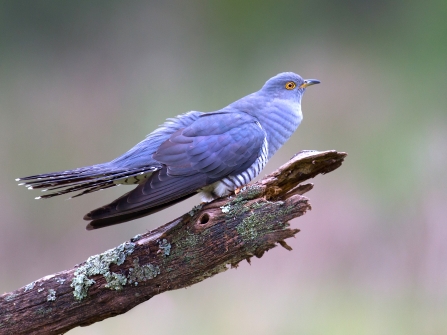
Our top 10 wildlife sightings for April
Bluebells at Sydlings Copse. Picture: Martyn Lane

Cuckoos calling
Did you know 14 April is cuckoo day? Having spent the winter in Africa, this is the date when it was traditionally said the first arrivals would start to call in our woods. A pigeon-sized bird, cuckoos are famous for laying their eggs in other birds' nests - particularly meadow pipits and reed warblers. We often have cuckoos at our Iffley Meadows nature reserve in Oxford, but they can be found across our region. Let us know when you hear your first one!
Listen to a cuckoo calling:
Carpet of bluebells at Moor Copse by Kate Dent
Blooming bluebells
We are lucky at BBOWT to have fantastic bluebell displays at nature reserves across our three counties: in Buckinghamshire they explode alongside the wood anemones and violets at our Rushbeds Wood reserve; in Berkshire the ground at Moor Copse is carpeted with their brilliant blue nodding heads, and in Oxfordshire the woods at Sydlings Copse near Oxford host a fantastic display. Please send us your photos!
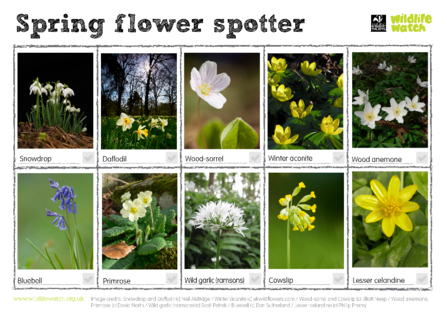
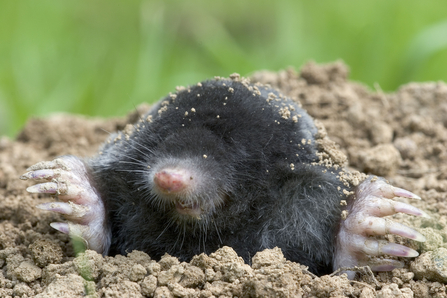
A European mole (Talpa europaea) emerging from a molehill. Picture: Shutterstock
Moving molehills
Moles are remarkable in being one of Britain's best-loved animals but also one of the least seen. April offers one of the best chances to spot a mole when they ramp up their tunnel-digging activity as breeding season approaches. Very occasionally individuals will emerge from the ground, but the closest most of us will ever get to seeing one is the sight of a molehill shaking as the architect beneath extends its burrow.
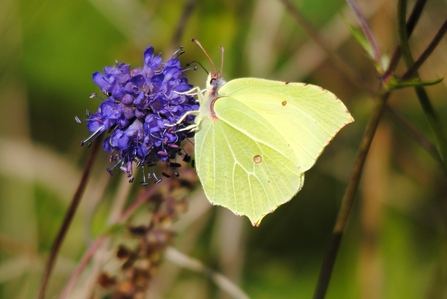
A brimstone butterfly (Gonepteryx rhamni). Picture: Amy Lewis
Brimstone butterflies
Bright yellow brimstones hibernate over winter, and are among the first butterflies to be seen each year as they emerge. Males have a deep sulphur colour, while females have a green tinge to their leaf-shaped wings that helps them disappear into hedgerows. You can find brimstones in gardens and parks, but our Yoesden reserve is a great place to see a variety of butterflies.
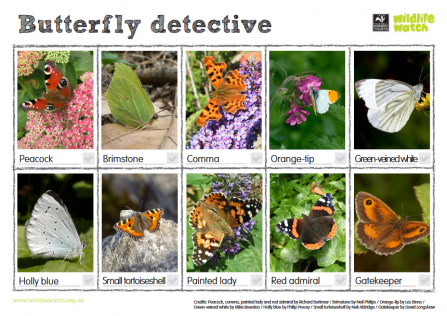
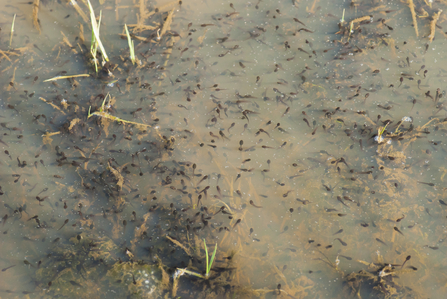
Tadpoles in a pond. Picture: Katrina Martin/ 2020Vision
Terrific tadpoles
One of the great treats of springtime is seeing the first tadpoles wriggling and darting around in the water. The pond at our CS Lewis reserve in Oxford is home to frogs, toads and newts, and there are few better ways to spend a warm April day than sitting by the water and watching the amphibian antics.
If you love amphibians, why not dig your own garden pond! It can be easy and fun to do, and is a brilliant way to help wildlife. Here's our wildlife gardening expert Ben with his top tips:
Build a garden pond (https://youtu.be/NPwEvxYhfSg)
Create a wildlife pond
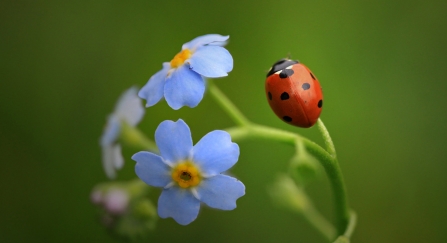
Seven spot ladybird by Jon Hawkins - Surrey Hills Photography
Ladybirds
Ladybirds, like brimstone butterflies, are among the handful of British insects that hibernate - often huddling together in their thousands. In April they emerge in their millions to go hunting. Did you know that ladybirds are mostly carnivorous? Despite their cheerful appearance, many ladybirds will devour aphids - which can often lead to a counter-attack by ants which 'farm' aphids in order to drink the sugary honeydew they excrete. Spend an hour in your garden on a warm April day and see what drama unfolds!
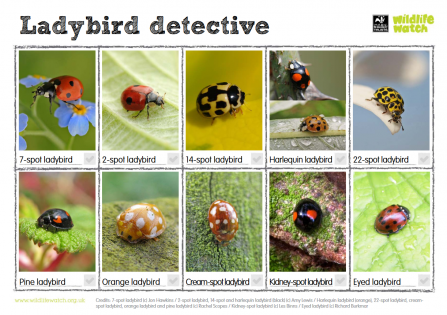
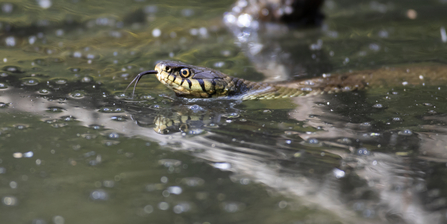
Swimming grass snake. Picture: Jon Hawkins/ Surrey Hills Photography
Glorious grass snakes
Growing up to a metre-and-a-half long, the beautiful grass snake is our largest reptile but also completely harmless. They begin to emerge in April and quickly start hunting. One of the most breathtaking natural spectacles in this country is the sight of a grass snake gliding over the surface of a pond as it hunts for amphibians - something we are lucky to have on the ponds at our Greenham Common reserve near Newbury.
Take a tour of Greenham and Crookham Commons nature reserve (https://youtu.be/2c9UwUb3NPY)
Take a tour of Greenham and Crookham Commons nature reserve

Water vole by Margaret Holland
Water voles awake
Having spent the winter restricted to their riverbank burrows, water voles emerge in spring to start devouring the new grass and other waterside vegetation. Sadly, water voles have been lost from 95% per cent of their UK range since 1900, largely due to habitat destruction and predation by American mink - however BBOWT's Water Vole Recovery Project has helped increase their local range by more than 70% since 2008.

Brown Trout (Salmo trutta) fry on river bed, viewed underwater. Picture: Linda Pitkin/ 2020Vision
Small fry
A fierce predator of small fish and flying insects, the brown trout is widespread in our freshwater rivers. It is has a golden body, flanked with pale-ringed dark spots. Mating season for these fish is usually January to March, with eggs laid in riverbed gravel. At this time of year the tiny fry start to hatch out. Spend an hour by a clear river or stream and see how many fish you can spot.

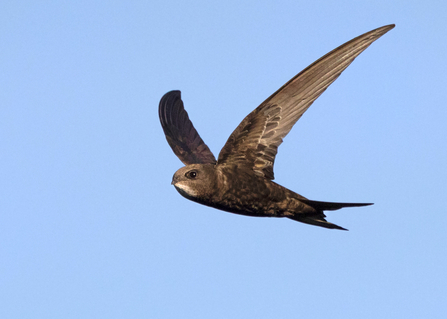
Common swift in flight by Jon Hawkins
Swift return
Our final iconic wild highlight for this month is the angular silhouettes of swifts and swallows soaring back into our skies. Having flown some 5,000 km from the sub-Saharan Africa, millions of these birds rocket into the eves of houses and offices - including our headquarters in Oxford. This year we have been taking part in the BirdRun charity challenge where people bet on when the first swift will be spotted in our area! Find out more at birdrun.co.uk
Stay up-to-date with our work
Sign up below to receive the latest news from BBOWT, tips about how you can help wildlife, plus information on how you can get involved.


